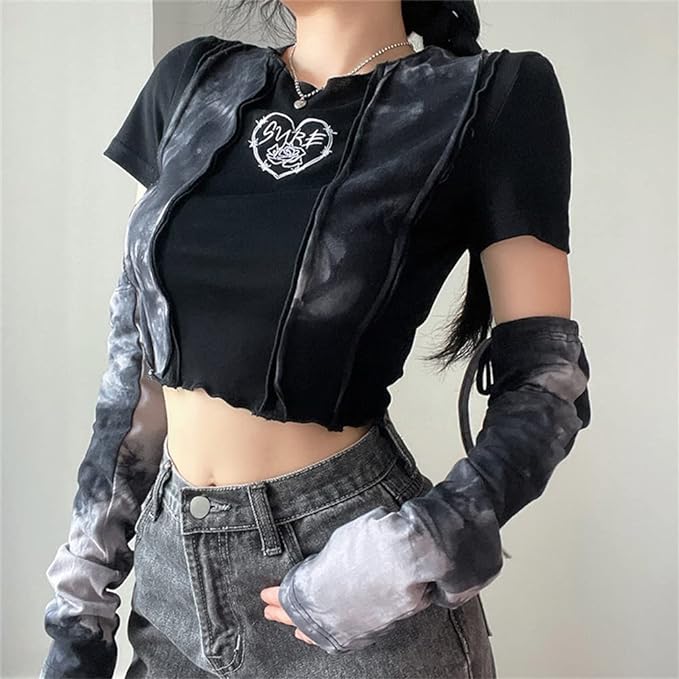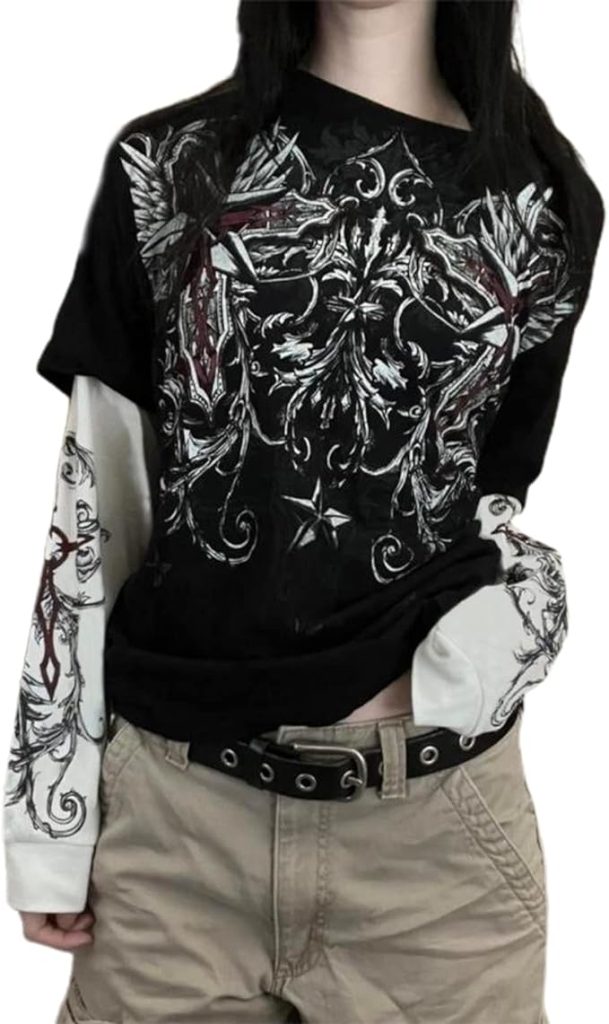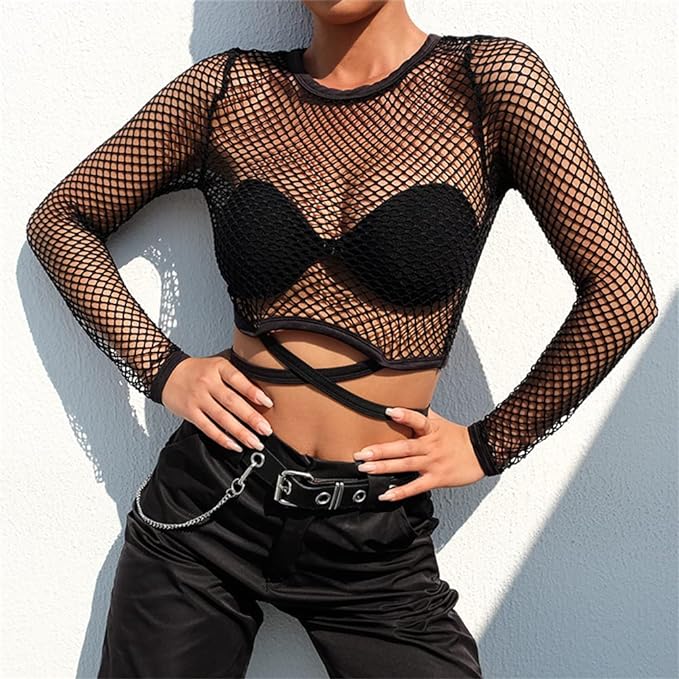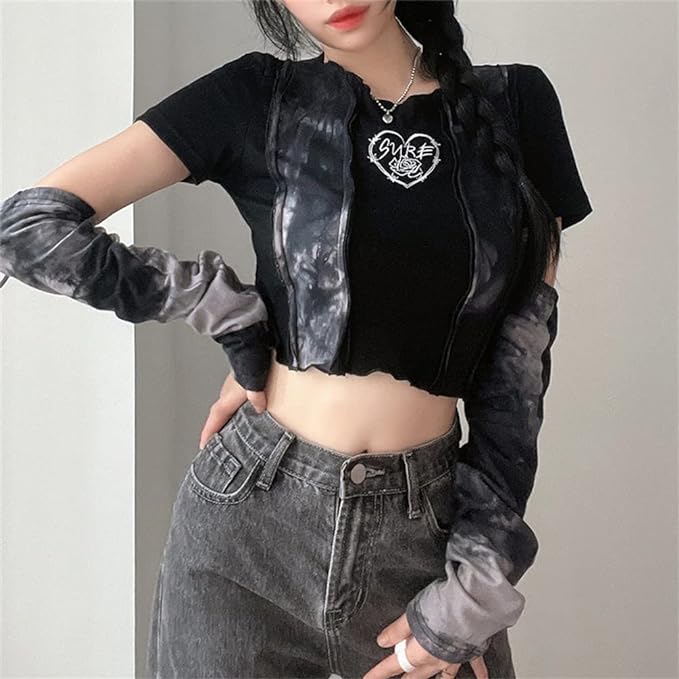Goth clothing is a subculture-inspired fashion style that embraces dark aesthetics, uniqueness, and self-expression. In this article, we delve into the world of goth clothing, exploring its origins, defining characteristics, the evolution of style, its significance as a form of self-expression, popular goth fashion trends, and tips for incorporating goth elements into everyday attire.

I. Origins and Defining Characteristics of Goth Clothing
1.1 The Birth of Goth Subculture:
Goth clothing emerged alongside the goth subculture, which originated in the late 1970s and early 1980s as a response to the punk movement. In the post-punk era, bands such as Siouxsie and the Banshees, Joy Division, and Bauhaus began to explore darker and more atmospheric soundscapes, laying the foundation for the gothic music genre. The goth subculture, with its introspective lyrics and melancholic melodies, attracted a following of individuals who resonated with its themes of despair, individualism, and emotional depth.
1.2 Dark Aesthetics and Symbolism:
Goth clothing is known for its dark aesthetics, drawing inspiration from various sources. Victorian and Edwardian fashion, with its emphasis on opulence and elegance, heavily influenced goth style. Flowing lace, corsets, ruffled blouses, and top hats are often incorporated into outfits, evoking a sense of romanticism and nostalgia.
Goth fashion also draws inspiration from horror films and Gothic literature, featuring imagery that reflects a fascination with the macabre and supernatural. Details such as skulls, crosses, bats, and occult symbols are commonly used in clothing designs to convey a sense of mystery and darkness. The color palette typically revolves around black, deep purples, dark reds, and other rich and somber hues, creating a striking visual aesthetic.
The combination of dark aesthetics and symbolic elements in goth clothing serves to create a distinct subcultural identity, allowing individuals to express their affinity for the darker side of life and explore themes of beauty in darkness. It provides a form of self-expression that goes beyond mainstream fashion trends, embracing individuality and a unique sense of style.

II. The Evolution of Goth Style
2.1 Traditional Goth Fashion
Traditional goth fashion embodies a more historical and romantic aesthetic, drawing inspiration from Victorian and Edwardian era clothing. It includes elements such as lace, corsets, velvet, ruffles, and intricate details. Silhouettes are often dramatic, with long coats, flowing gowns, and elaborate accessories.
2.2 Modern and Alternative Goth Styles
In recent years, women goth fashion has evolved to incorporate various alternative and modern elements. Alternative goth styles may include influences from cybergoth, industrial, steampunk, and nu-goth fashion. These styles experiment with bold shapes, futuristic elements, and a combination of different subculture aesthetics.

III. Significance of Goth Clothing as Self-Expression
3.1 Empowering Individuality
Goth clothing serves as a powerful form of self-expression, allowing individuals to embrace their unique identities and break free from societal norms and expectations. By adopting goth fashion, individuals can explore different aspects of their personality and express themselves authentically, transcending mainstream fashion trends.
3.2 Embracing Darkness and Fine Art
Goth fashion often celebrates the beauty found in the dark and mysterious aspects of life. It embraces themes of morbidity, existential questioning, and poetic romanticism. Through fashion, goth enthusiasts can appreciate and share their love for gothic literature, art, and music, creating a deeper connection with the goth subculture.

IV. Popular Goth Fashion Trends
4.1 Glam Goth:
Glam goth is a fusion of gothic fashion with elements of glam rock and punk. This style combines the dark and dramatic aesthetics of gothic fashion with the bold and flashy elements of glam rock and punk. Metallic accents, such as studs and spikes, are often incorporated into clothing and accessories to add a edgy and rock-inspired touch. Leather jackets, pants, and accessories are commonly seen in glam goth outfits, adding a rebellious and punk-inspired feel.
Fishnet textures are also prominent in glam goth fashion, whether it’s in the form of fishnet stockings, gloves, or tops. This adds a sense of allure and adds another layer of texture to the overall look. In terms of makeup, glam goth often includes bold and dramatic elements, such as dark smoky eyes, red or deep burgundy lips, and sculpted cheekbones. Accessories play a crucial role in completing the glam goth look, with statement jewelry, spikes, and chains adding an extra dose of attitude and glamour.
4.2 Pastel Goth:
Pastel goth is a softer and more whimsical take on goth fashion, combining pastel colors with traditional goth elements. It blends the sweetness of pastel hues with the dark and macabre aesthetics associated with gothic fashion. Pastel goth garments often include pastel-colored dresses, skirts, and tops, decorated with gothic motifs like skulls, crosses, or bats. These contrasting elements create a unique and visually striking look.
Accessories are essential in completing the pastel goth style. Pastel-colored hair, such as lilac or baby pink, is commonly seen, adding a playful and dreamy element to the overall appearance. Chokers, platform shoes, and thigh-high socks in pastel shades often accompany the outfits, adding additional pop and texture.
Makeup is typically a blend of soft pastel shades, including light pinks, lavenders, and blues, paired with dark eyeliner and mascara to retain a touch of the gothic aesthetic. The juxtaposition of the sweet pastel colors and the darker makeup creates a harmonious and captivating look in pastel goth fashion.
Both glam goth and pastel goth provide alternative interpretations of goth fashion, allowing individuals to express their unique style and personality within the goth subculture. These trends illustrate the versatility and ongoing evolution of goth fashion, demonstrating that there are no limits to creativity within this subculture.

V. Incorporating Goth Elements into Everyday Attire
5.1 Accessorizing with Goth Influences
Incorporating goth elements into everyday attire can be as simple as adding gothic accessories. This may include statement jewelry such as chunky skull rings, chokers, or lace gloves. Accessories like fishnet stockings, platform boots, or a wide-brimmed hat can also add a touch of goth to any outfit.
5.2 Layering and Mixing Styles
Layering different garments with gothic influences can transform a basic outfit into a more goth-inspired ensemble. Pairing a black lace top with a leather jacket or adding a corset belt to a dress can impart a goth aesthetic. Mixing styles and textures, such as pairing a Victorian-inspired blouse with ripped jeans, can also create a unique and edgy look.
VI. Conclusion and Embracing Individuality through Goth Clothing
6.1 Embracing Personal Style
Goth clothing provides individuals with the opportunity to embrace their personal style and express themselves authentically. Whether adhering to traditional goth fashion or incorporating alternative influences, goth clothing allows individuals to create striking and unique looks that reflect their individuality and sense of style.
6.2 Transcending Fashion Trends
By adopting goth fashion, individuals can escape the limitations of mainstream fashion trends and embrace their love for dark aesthetics and alternative subcultures. Finally, Goth clothing plays a significant role in providing a form of self-expression that celebrates individuality, creativity. And the power of embracing one’s unique identity.
